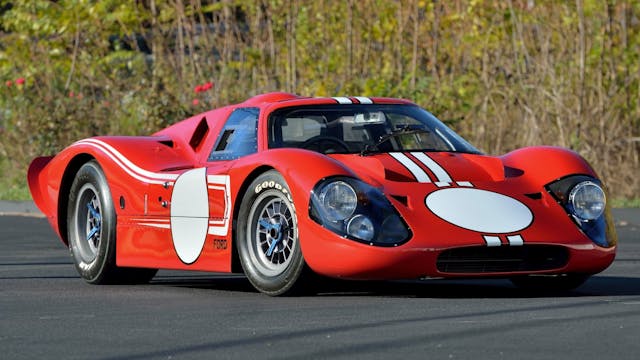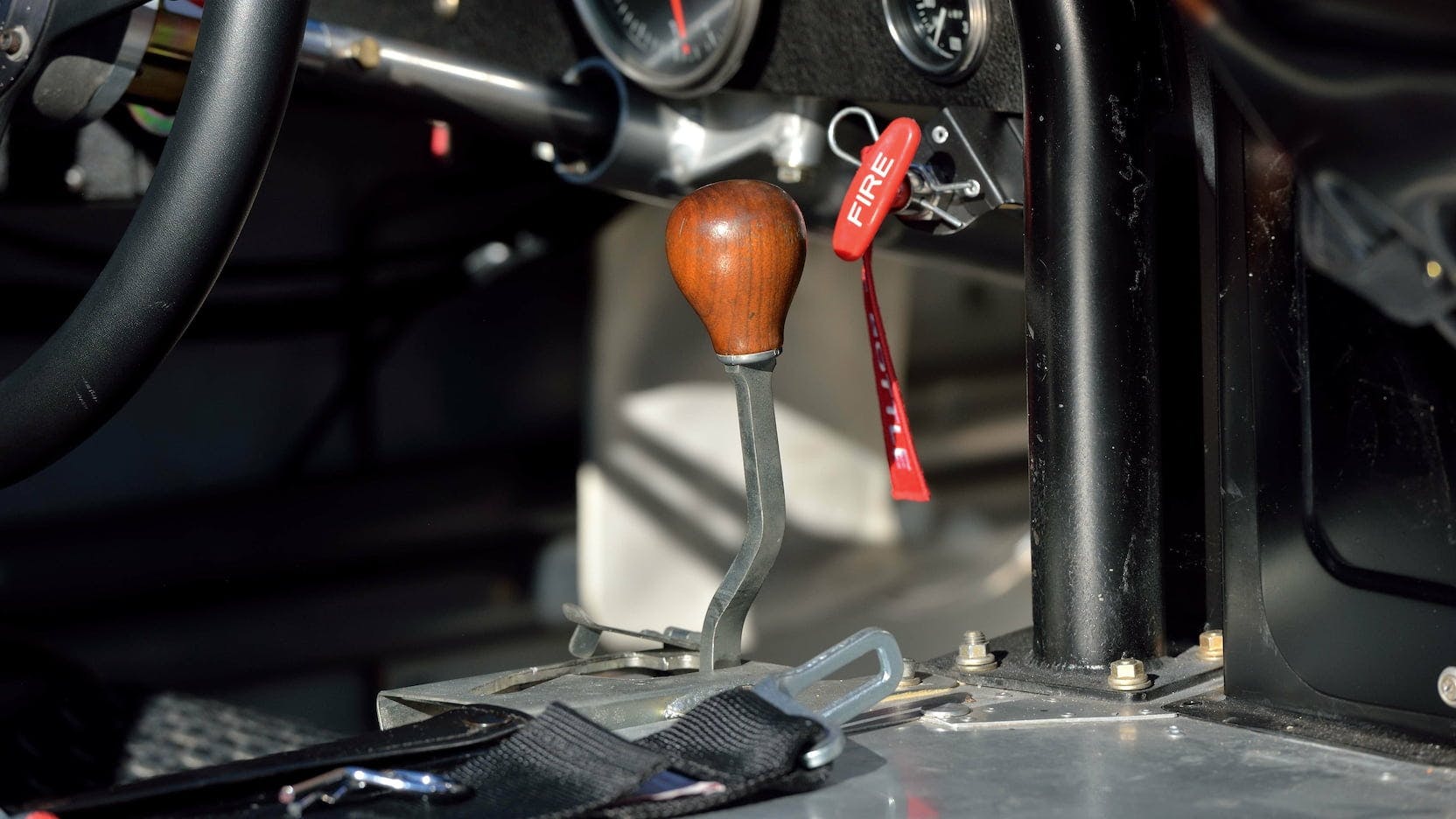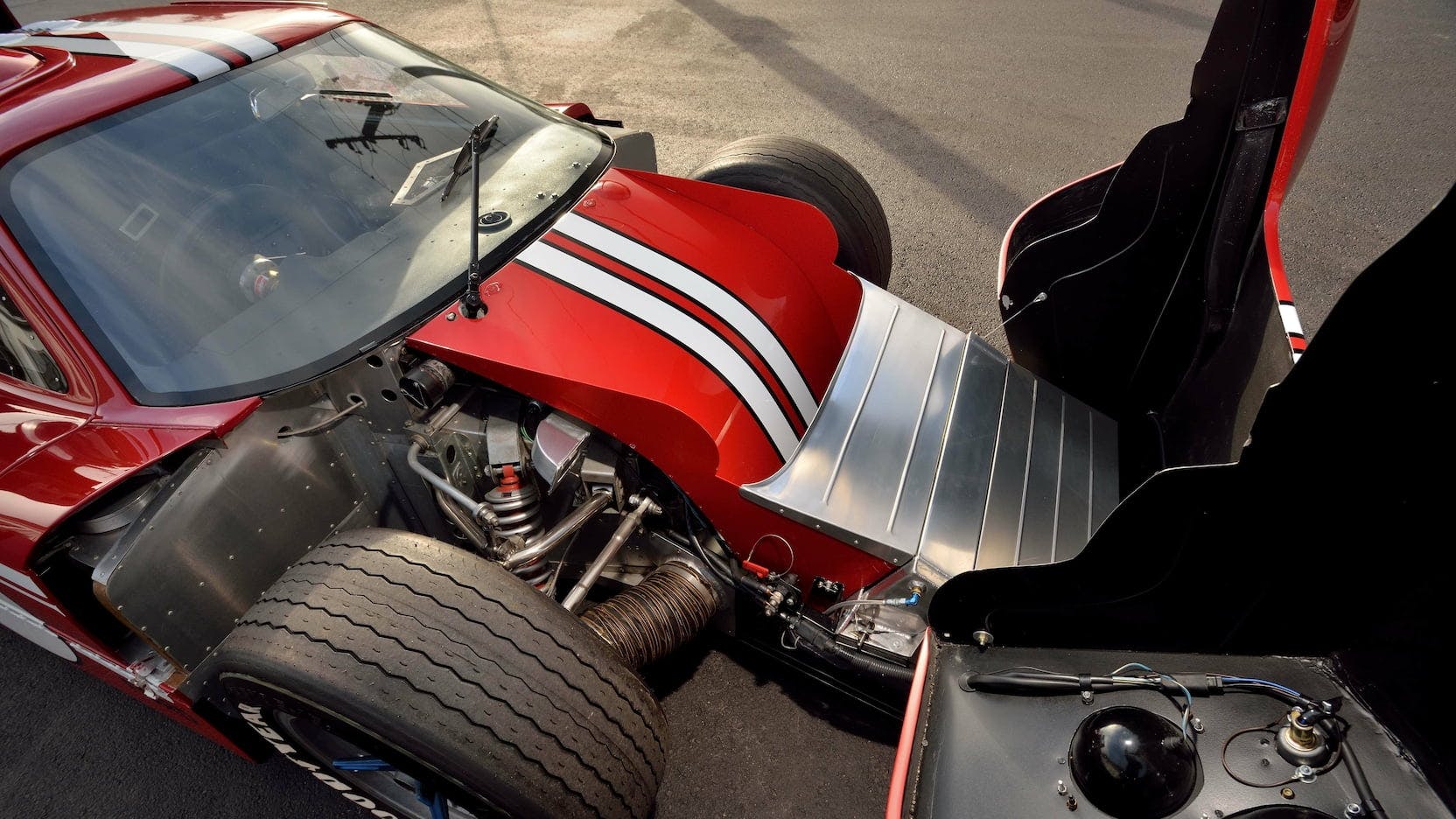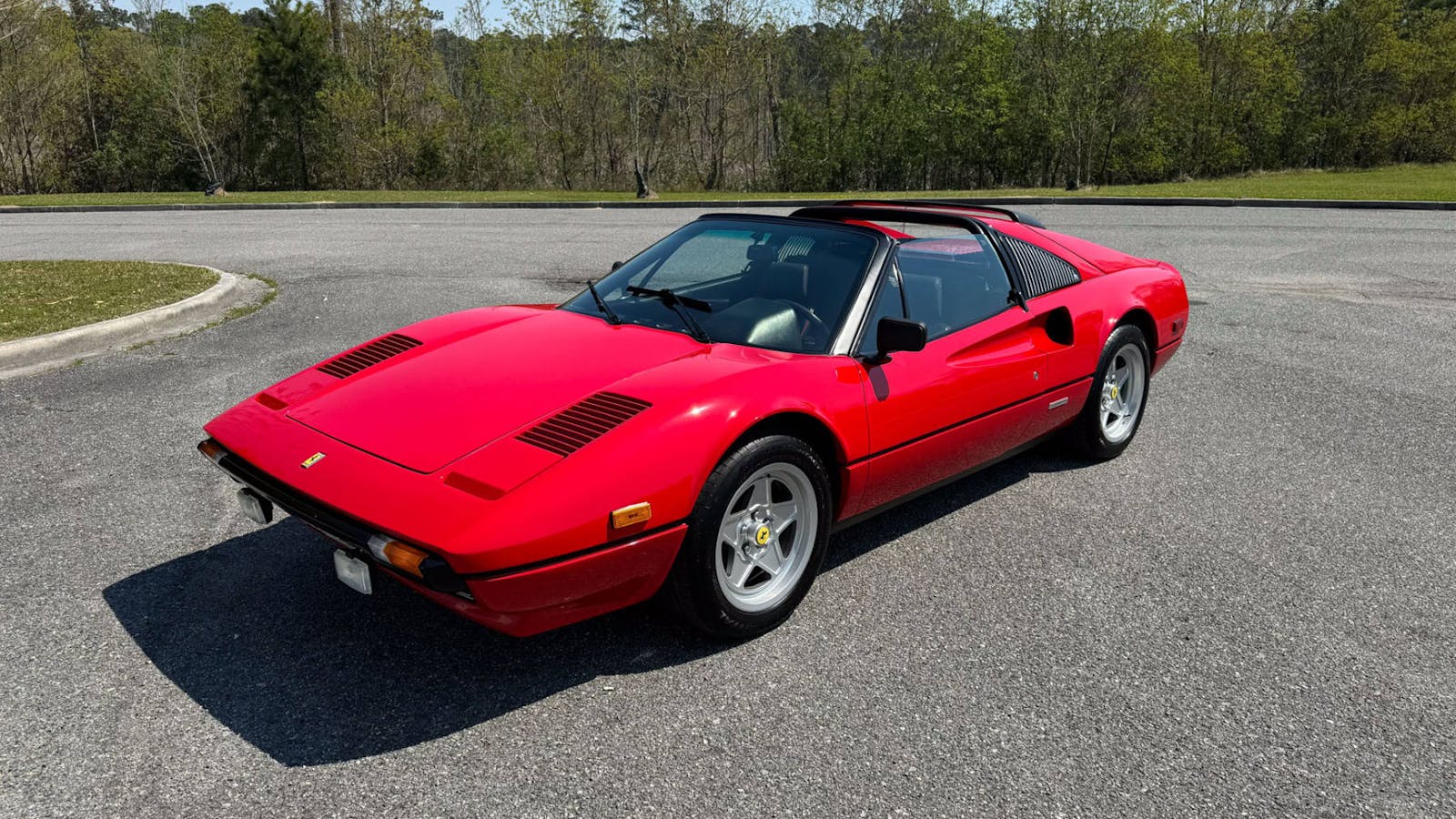This Ford GT40 Mk IV is a rare, open-cockpit convert
This red, 427-powered, Gurney-bubble-fitted Le Mans stormer is a real-deal Ford GT40 Mk IV. The paint and bodywork are purely emulative, though; this Ford never saw France at night. No, its history is a bit unique, and some lucky bidder at Mecum’s Kissimmee auction will have the chance to own this car and thus a portion of the lore surrounding America’s most prominent Le Mans endurance racer.

Even though the Ford GT40 Mk II swept Le Man’s podium in 1966, the Blue Oval remained committed to improving upon its venerable mid-engine machine for their next go at the French 24-hour race. Ford engineered its new entry, dubbed the “J-Car,” to be lighter, more powerful, and slipperier through the air. The chassis was formed from lightweight honeycomb-aluminum panels and wore novel, more aerodynamic bodywork.
Testing the new J-Car was critical—and deadly. In August of 1966, two months after he was snubbed Le Mans glory, Ken Miles was killed while shaking down a J-Car at a private test in Riverside.
Ford pushed forward with development of the next-gen racer, eventually maturing into the Ford GT40 Mark IV. In total, 12 chassis were built. Four test mules wore the J-Car bodywork. Four more were fitted with refined bodywork and sent overseas to fight for Le Mans glory. Of the four chassis, J-5 was at the head of its class after 24 hours, with A.J. Foyt and Dan Gurney winning first overall. An American team, and American car, with two American badasses behind the wheel—the number-one-sporting red and white livery would be immortalized forever in the annals of sports car racing.
Then, the FIA, Le Mans’ sanctioning body rewrote the rulebook in 1967, after the American’s dominance. The Mk IV was deemed illegal and the final four (J-9 through J-12) were left unfinished.
This is where things get looney. Kar Kraft—the same Michigan-based in-house firm that Ford used for development of the Mk IV—transformed two of the unused J chassis cars into open-cockpit racers. The cars were tested but never saw competition; that is, until they were sold to Agapiou Racing.

Devout Shelby fanatics will recognize this name. Charlie Agapiou was an English-born mechanic who moved to L.A. without prospects and began working for Ken Miles in 1962 while the fellow expatriate was driving a Sunbeam Alpine for Rootes Group. Not long after Miles moved to Shelby American, he recruited to Agapiou to come work for the Texan.
Agapiou worked at Shelby American through the glory years, until he was drafted during the Vietnam era. After a stint in the Army, Charlie and his older brother Kerry started their own road racing team in 1969. They ran pretty successfully with a Lola T70. Then, Ford sold them the Mark IV scraps to the brothers for $1. With the pile, the brothers went off to compete in Can-Am against the likes of Chevy-powered white Chapparals and orange McLarens.
The J-10 chassis was fitted with new bodywork and Boss 429 power. In two years, the open-cockpit racer hosted a hall of fame roster. Peter Revson, Jack Brabham, George Follmer, David Hobbs, and Vic Elford all spent time in the seat, but it was Canadian John Cannon who did most of the driving. After a crash during the 1970 season, J-10 was sent to England where it remained under the Agapiou brother’s ownership until 1989. It was then that the new owners began returning the car to Mark IV spec.

In 1996, the unfinished car traded hands once again. After a four year restoration (see: owner Jim Holden describing his quest for an original spec Boeing 707 wiper motor on a GT40 forum) J-10 finally saw the restoration finish line. Its Mark IV bodywork, which it never wore in period, was even formed by Holman-Moody fabricator Ken Thompson using molds from an original Mk IV. Since J-10 never sported the long tail curves back in the day, it never had a proper livery. Instead, its owners opted for the most recognizable among the 12 Mark IVs: the 1967 Le Mans-winning red and white paint. It debuted to the public at Amelia Island in 2018.


So what can we expect in Kissimmee for this unique GT40 Mark IV? Well, for one, Mecum’s estimate indicates it expects $2M–$2.2M. Large as those numbers are, the average value of a GT40 Mark IV ranges from $3.9M in Fair (#4) condition to $8.1M in Concours (#1) condition. “Even though the estimate is lower than the Hagerty Price Guide value, I think it is appropriate for a GT40 that is lacking so many original parts,” says Hagerty automotive intelligence editor Greg Ingold. “The Can-Am GT40s were highly unsuccessful and the fact that this car has been rebodied back to a coupe isn’t great for its value.”
Sure, J-10 may never have graced the Mulsanne or been doused by Gurney’s champagne spray. But what it lacks in Le Mans provenance it makes up in other history. As with any race car, parts, tires, and bodywork were swapped race-to-race, which means the concept of “originality” is more nebulous than with a road car. When purchasing a desirable vintage racer in the present day, you’re buying a serial number and a story. This car has both.












‘Splain to me what is “open cockpit” about this car!
You have to open it to get in?
….the story itself ‘splains it…
You’d have to refer back to the photo of the car in its Can-Am configuration. Obviously has now been returned to an enclosed cockpit car. Too bad more photos of the car in open cockpit configuration weren’t posted; looks interesting.
That engine and the nest of snakes!
The original chassis was used as an open cockpit Group 7 CanAm car. Then, it was rebooted as a Mk IV.
Grebisx
The car was originally bodied as an open cockpit ‘J’ chassis and raced that was in period. That’s what makes it an ‘open cockpit’. It is a bit of a misnomer really, but that’s what is states in the article.
Give me $2M somebody. Anybody? Elon? Jeff? I don’t care one whit that it is a rebody. It’s as real as real can be.
Off topic, but I have been wondering with all these multi-million dollar cars changing hands, what is the net worth one needs to play in this market? I was surprised that there are less than 3000 billionaries worldwide, with about one quarter in the US. I would have thought that level was what one needed to play in this market, but I guess it must be lower. How much lower…??? (And no, I am not angry that people have that money, just surprised how many seem to…)
Nah, even multi-millionaires have their money workin’ hard for them these days. And apparently more millionaires are entering the market as of 2021: https://www.investopedia.com/news/number-millionaires-continues-increase/
And lets not forget that leasing is always an option for these folks: https://www.luxuryleasepartners.com/financedept.cfm/page/sale-leaseback-program-1504/
Thanks for those points, Sajeev. However it seems to me that being a millionaire (if that means having over a million dollars in the bank) is not what it used to be.
That is very true! You need millions upon millions these days.
My guess is these “uber unobtainium for regular folk” cars are mostly bought by investment groups. And re read the story, it explains the open cockpit angle. This car was re bodied to a GT40 from a competing CanAm car.